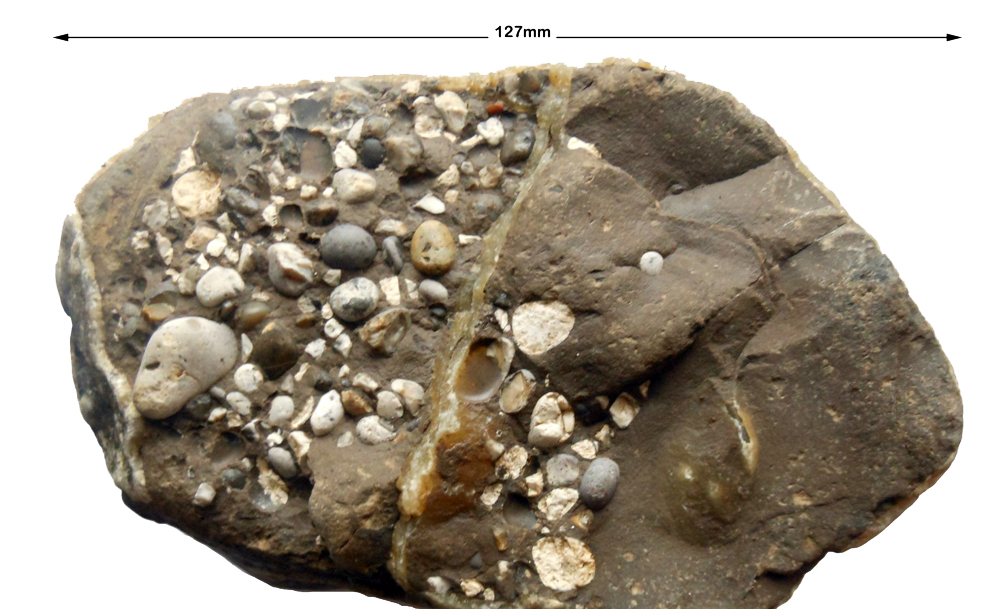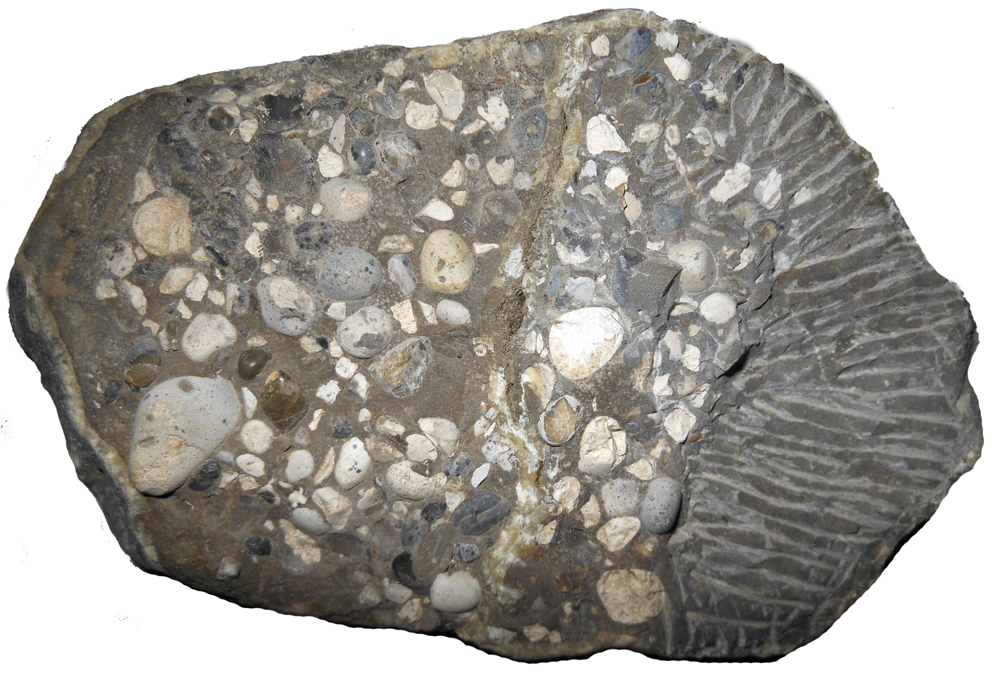| Calcarious Concretions ( Septarian
Nodules) 2 |
| A very
unusual accumulation of pebbles trapped within a septated calcarious
nodule. The nodule was beach collected by Danny Hogben (2021) and is
slightly wave damaged. The calcite infill of the nodule is quite plainly
evident in the form of a yellowish band through the centre. The pebbles
appear to be primarily decomposed flint. The broken pebbles are evidence
of this. They were embedded within the septarian at the time of its
formation during the deposition of the London clay 48 to 50 odd million
years ago and considering the distance from land, and the relative depth
of the sea at this time it is a remarkable occurence. |
 |
Above,
as found/below after some prep work has been carried out |
 |